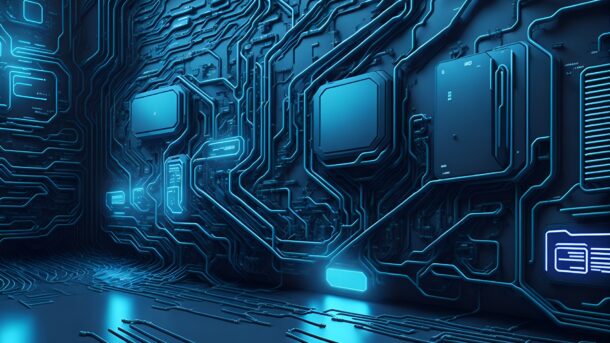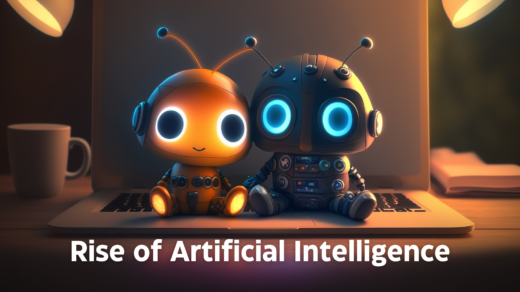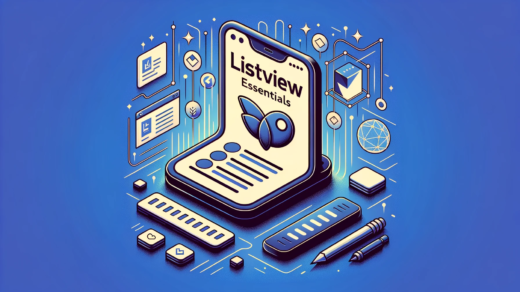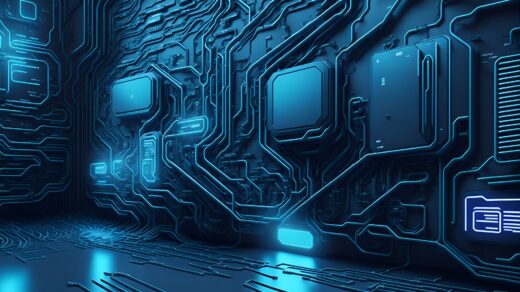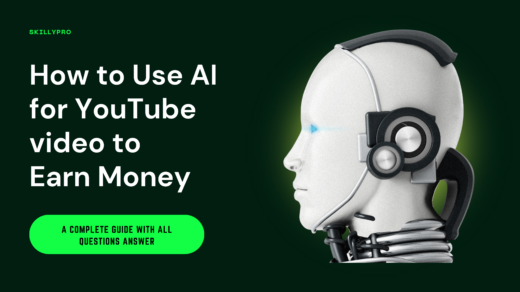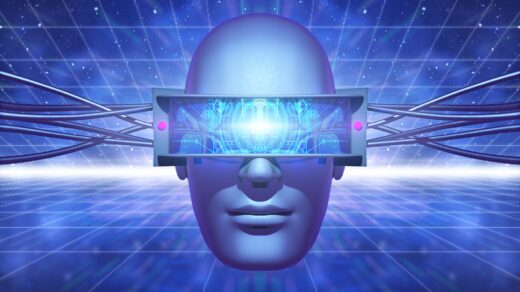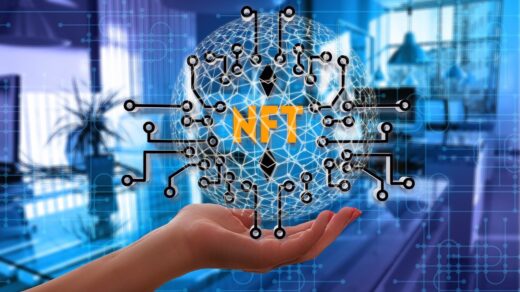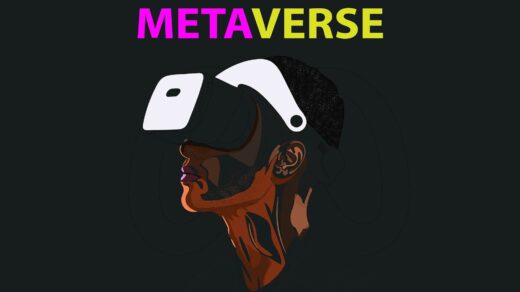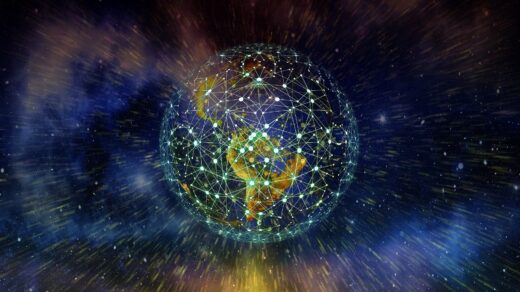Artificial Intelligence (AI), a technological invention that has reshaped the landscape, continues to grow and revolutionize how we interact with the environment. This essay will go into the complexities of artificial intelligence, its evolution, groundbreaking uses, and the hopeful future it holds.
Understanding Artificial Intelligence
Artificial intelligence is a discipline of computer science that focuses on developing intelligent machines that react and function in the same way as people do. AI is intended to interpret complicated data, learn from it, and make sound conclusions. It’s the driving force behind many common tools and services, from voice assistants like Siri and Alexa to Netflix and Amazon recommendation algorithms.
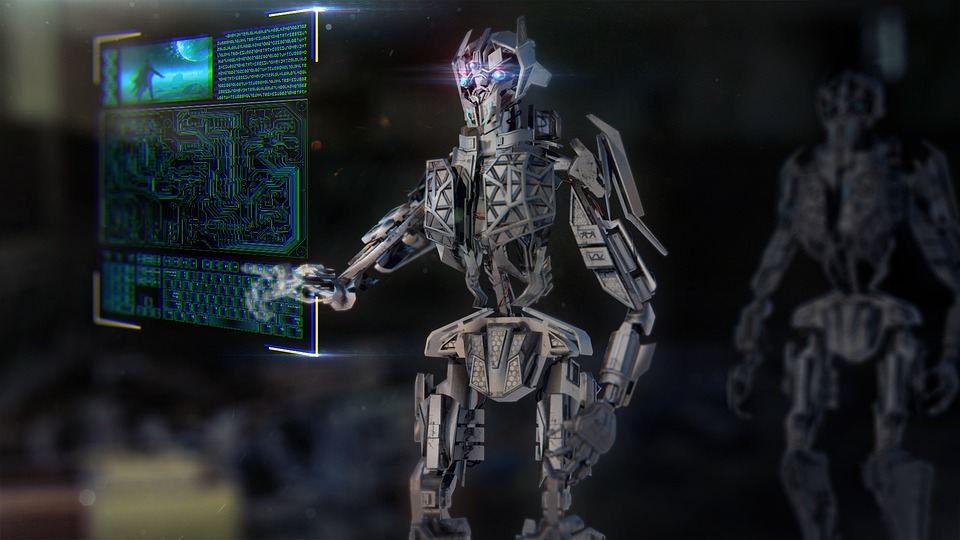
The Evolution of Artificial Intelligence
Since its start in the mid-20th century, artificial intelligence has made significant progress. Initially, AI was concerned with creating computers that could replicate human intellect. It now includes a diverse set of technologies such as Machine Learning (ML), Deep Learning (DL), Natural Language Processing (NLP), and others. Many current services and products rely on these technologies to make our lives easier and more convenient.
Revolutionary Applications of Artificial Intelligence
AI’s capacity to learn and adapt has made it a critical component in a variety of industries. AI algorithms in healthcare can analyze massive volumes of data to forecast ailments and offer treatment strategies. AI enables self-driving automobiles in the automotive sector. AI is used in finance for risk assessment, fraud detection, and trading. These applications, among others, demonstrate AI’s transformative power.
The Future of Artificial Intelligence
The potential for AI in the future is endless. As AI advances, we may expect to see increasingly complex applications that will revolutionize a variety of sectors. We are on the verge of a new age in which artificial intelligence will play a critical role in tackling some of the world’s most complicated challenges.
Artificial Intelligence (AI) is a rapidly evolving field with a host of advantages and some notable challenges. Let’s explore the pros and cons of this transformative technology:
Pros of Artificial Intelligence
1) Increased Efficiency and Productivity
Artificial intelligence may automate repetitive processes, decreasing human effort and enhancing efficiency. It works around the clock and cuts the time it takes to complete activities, increasing productivity.
2) Improved Decision-Making
AI systems can analyze massive volumes of data and derive insights, allowing for more informed decision-making. AI algorithms can forecast trends, which is very important in industries such as banking and healthcare.
3) Enhanced Accuracy
AI reduces the possibility of human mistakes and produces reliable results. This is especially important in industries such as healthcare, where AI is employed in diagnostic and treatment regimens.
4) Personalized Experiences
Individual tastes and behavior may be analyzed by AI to give personalized suggestions and experiences, increasing consumer happiness in industries such as retail and entertainment.
5) Potential for Innovation
From self-driving vehicles in the automotive sector to predictive analytics in finance and personalized learning experiences in education, AI has the potential to revolutionize a wide range of industries.
Cons of Artificial Intelligence
1) Job Displacement
While AI can improve productivity, it also increases the danger of job loss due to automation. Jobs that need repeated tasks are more vulnerable.
2) High Initial Costs
Because of the high cost of hardware, software, and maintenance, implementing AI technology can be costly. Smaller enterprises may struggle to afford AI technology.
3) Data Privacy Concerns
AI systems need massive volumes of data, which raises issues about data privacy and security. It is a significant problem to ensure that AI systems are secure and respect user privacy.
4) Lack of Emotional Intelligence
While artificial intelligence systems can approximate human intellect, they lack emotional intelligence. They are unable to comprehend human emotions or respond with empathy, both of which are required in many interpersonal encounters.
5) Dependency on Machines
Overreliance on AI and automated systems may result in less human intervention and greater dependence on computers, thereby diminishing critical thinking and decision-making abilities.
Conclusion
Artificial intelligence has gone a long way, yet it is far from finished. As we continue to harness the potential of AI, we are paving the way for a future in which robots not only simplify jobs but also assist humans in making better-informed decisions. AI is more than a passing technical fad; it is a game changer in today’s digital age.
Read More
Top Blockchain Skills That Are in Demand and Why They Are Essential.
Foldable Devices: A Revolution in Mobile Technology
Electric Vehicles: Driving the Future of Sustainable Transportation
Wearable Technology: Revolutionizing the Future of Smart Devices
The Ultimate Guide to Smart Home Technology: Revolutionizing Modern Living
FAQs
What is Artificial Intelligence (AI)?
Artificial intelligence (AI) is a discipline of computer science that tries to construct machines that replicate human intellect. Learning, thinking, problem-solving, perception, and language comprehension are all examples of cognitive abilities.
How does AI work?
Large volumes of data are combined with quick, iterative processing and clever algorithms to create AI. This enables the program to learn autonomously from data patterns and characteristics.
What are the types of AI?
There are two kinds of AI: narrow AI, which is meant to execute a specific task (for example, facial recognition or voice commands), and general AI, which can perform any intellectual work that a person can.
What is the difference between AI, Machine Learning (ML), and Deep Learning (DL)?
AI is the larger notion of computers performing jobs intelligently. Machine learning (ML) is an AI application in which machines learn from data without being explicitly programmed. DL is a subset of ML that use neural networks with multiple layers (thus the term ‘deep’) to learn complicated patterns from massive quantities of data.
How is AI used in everyday life?
AI is utilized in a variety of applications, including voice assistants (such as Siri and Alexa), recommendation engines (such as those found on Netflix and Amazon), email spam filters, and GPS navigation apps.
What are the benefits and drawbacks of AI?
AI’s advantages include higher efficiency, better decision-making, more accuracy, personalized experiences, and the possibility for innovation. Job displacement, hefty beginning expenses, data privacy problems, a lack of emotional intelligence, and growing reliance on robots are all disadvantages.
What is the future of AI?
AI’s future contains exciting potential. It is predicted to become progressively more ingrained in our everyday lives and businesses, hence encouraging innovation. However, technology brings with it new issues, such as employment automation and ethical concerns, which society must address.
Is AI dangerous?
AI, like any other technology, may be harmful if misused or deliberately. Concerns include data privacy, employment displacement, and the application of AI in autonomous weaponry. The hazards, however, may be handled with adequate legislation and ethical considerations.
What skills are needed to work in AI?
Working in AI often necessitates a good background in mathematics and programming. Knowledge of programming languages (such as Python or Java), comprehension of algorithms and neural networks, and expertise with Machine Learning and Deep Learning are all essential. Problem-solving, creativity, and critical thinking are also key soft skills.
How does AI impact the job market?
AI has the potential to both generate and displace employment. While technology may automate certain monotonous processes, possibly displacing workers, it also provides new jobs centered on AI development, implementation, and maintenance. Furthermore, AI may supplement many vocations by doing regular activities, allowing people to focus on more difficult and creative tasks.
How does AI learn?
AI learns through a process known as Machine Learning, in which AI systems are given massive volumes of data to discover patterns and make choices. Deep Learning takes this a step further by employing neural networks to learn from data in a manner similar to how people learn.
Can AI replace humans?
While AI may automate certain activities and even surpass people in certain areas (such as data processing or chess), it cannot replace human traits such as emotional intelligence, creativity, and critical thinking. Furthermore, AI systems are produced and maintained by people, emphasizing the relevance of human responsibilities in the future.

